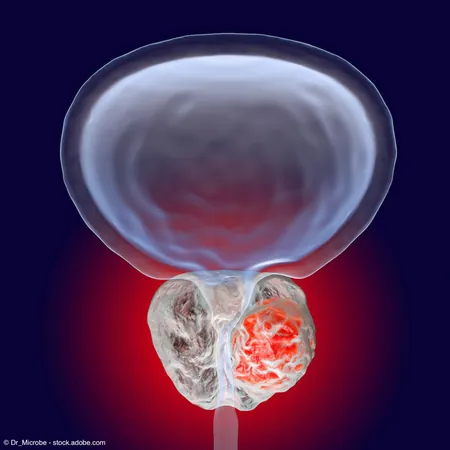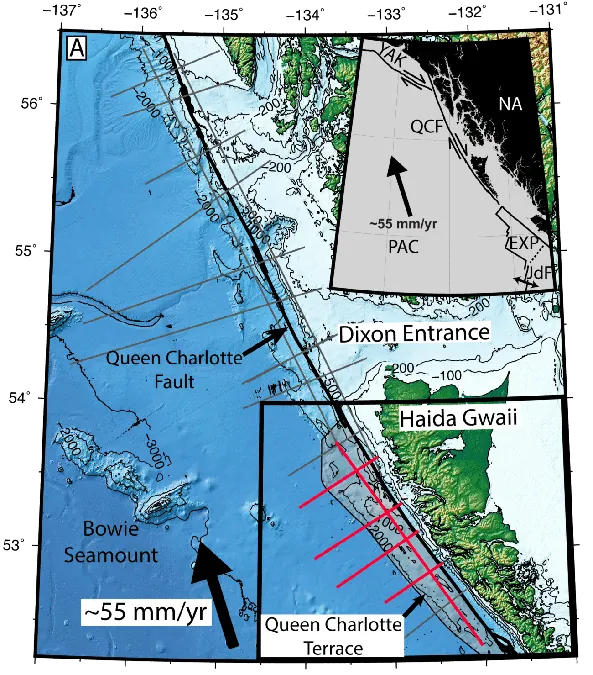
New Insights into PSMA Levels: A Game Changer for Prostate Cancer Treatment?
2024-09-20
Author: Li
Introduction
Recent research has uncovered critical links between prostate-specific membrane antigen (PSMA) levels and tumor biology, as well as treatment sensitivity in patients newly diagnosed with prostate cancer. This groundbreaking study, published in *European Urology*, suggests that PSMA could serve as a valuable biomarker, potentially revolutionizing personalized treatment options for these patients.
Research Overview
Lead author Dr. Adam B. Weiner, a urologist at Cedars-Sinai Medical Center in Los Angeles, emphasizes the common practice among U.S. patients to undergo PSMA PET scans for staging soon after diagnosis. However, he notes that not all prostate tumors exhibit PSMA, suggesting that variations in expression levels may reflect important differences in cancer biology. Previous studies have shown similar trends in advanced metastatic prostate cancers, highlighting the necessity of investigating PSMA levels in treatment-naïve patients prior to initiating therapy.
PSMA RNA Abundance
In this particular study, researchers used PSMA RNA abundance as a proxy for PET scan uptake measurements, revealing a moderate correlation between PSMA RNA and maximum standard uptake values (SUVmax) on tests (P = 0.41). Interestingly, tumors with elevated PSMA expression often exhibited more intense androgen receptor signaling. This was especially evident when comparing primary adenocarcinoma samples to benign tissues, castration-resistant prostate cancer, and neuroendocrine tumors.
Androgen Deprivation Therapy Findings
The authors noted significant findings regarding androgen deprivation therapy (ADT). After a 22-week ADT treatment period, patients with high PSMA expression showed reduced PSMA levels (P = 0.016). Moreover, intensive treatments combining ADT with enzalutamide—a potent androgen receptor antagonist—further decreased PSMA levels (P < 0.001). Among patients experiencing biochemical recurrence and possessing high PSMA tumors, those treated with ADT had improved cancer-specific survival rates (adjusted HR, 0.54, 95% CI, 0.34 to 0.87; n = 174).
ECOG-ACRIN 3805 Trial
In a deeper dive, data from the ECOG-ACRIN 3805 (CHAARTED) trial presented intriguing results. Patients with metastatic castration-sensitive prostate cancer receiving ADT alone had a notable association between high PSMA tumors and longer overall survival, although it fell short of statistical significance. Conversely, only patients with low PSMA tumors appeared to benefit from the addition of docetaxel chemotherapy (n = 79; adjusted HR, 0.32; 95% CI: 0.14–0.72).
Radiotherapy Benefits
Moreover, findings indicated that patients with high PSMA tumors might also reap greater rewards from radiotherapy, showcasing a longer duration until recurrence following initial treatment (AHR, 0.50; 95% CI, 0.28 to 0.90; n = 248). In a subsequent analysis of the SAKK09/10 trial, while high PSMA patients undergoing salvage radiotherapy showed a trend of improved progression-free survival at a lower 64-Gy dose (RMST, +7.60; 95% CI, 0.05 to 15.16), the results varied at the higher 70-Gy dose (RMST, 3.52; 95% CI, -3.30 to 10.33).
Conclusion
In summary, the evidence suggests that robust PSMA expression is associated with a more favorable response to androgen-targeted therapies, while tumors displaying low PSMA may harbor characteristics linked to cancer resilience and radiotherapy challenges.



 Brasil (PT)
Brasil (PT)
 Canada (EN)
Canada (EN)
 Chile (ES)
Chile (ES)
 Česko (CS)
Česko (CS)
 대한민국 (KO)
대한민국 (KO)
 España (ES)
España (ES)
 France (FR)
France (FR)
 Hong Kong (EN)
Hong Kong (EN)
 Italia (IT)
Italia (IT)
 日本 (JA)
日本 (JA)
 Magyarország (HU)
Magyarország (HU)
 Norge (NO)
Norge (NO)
 Polska (PL)
Polska (PL)
 Schweiz (DE)
Schweiz (DE)
 Singapore (EN)
Singapore (EN)
 Sverige (SV)
Sverige (SV)
 Suomi (FI)
Suomi (FI)
 Türkiye (TR)
Türkiye (TR)
 الإمارات العربية المتحدة (AR)
الإمارات العربية المتحدة (AR)